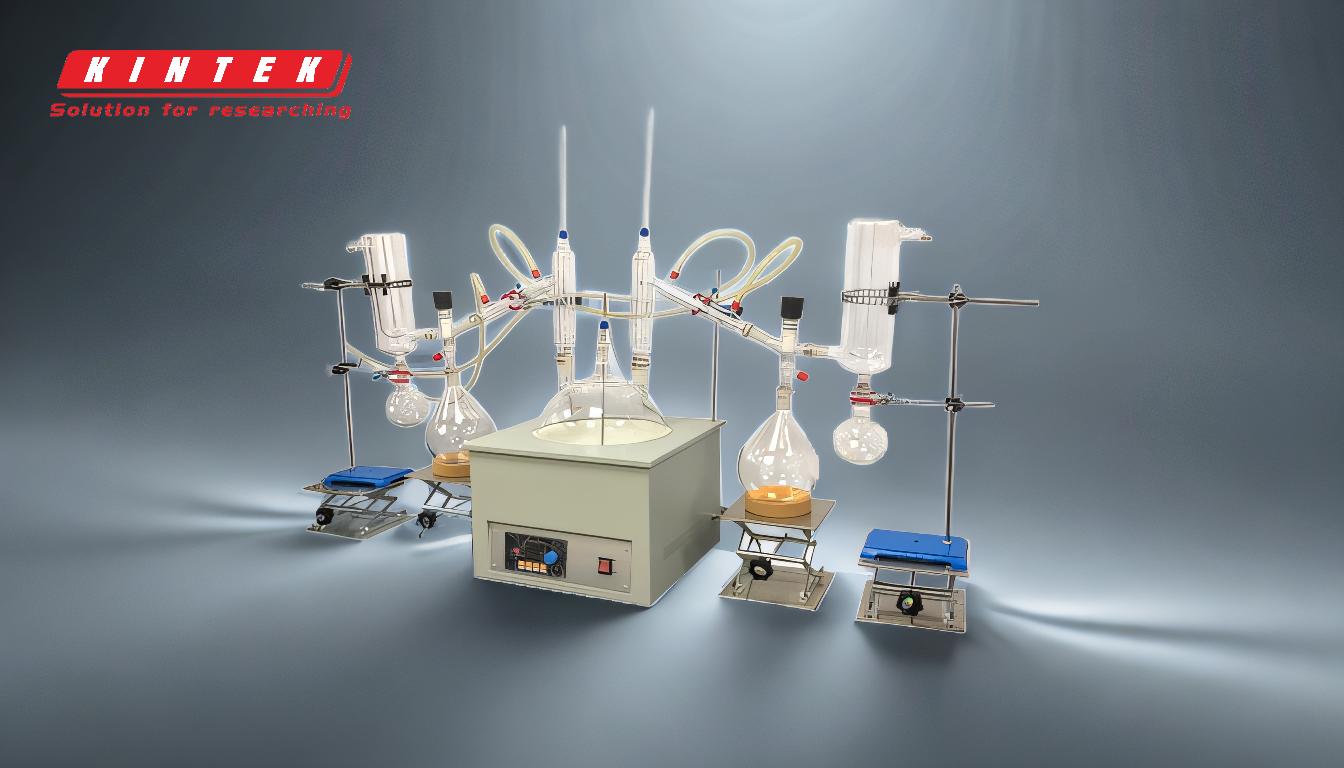Molecular distillation and short path distillation are closely related techniques used for separating and purifying compounds, but they are not the same. Molecular distillation is a specialized form of short path distillation that operates under extremely low vacuum pressure, typically less than 1x10-2 mbar. This ensures that the mean free path of molecules is longer than the distance between the evaporator and condenser, eliminating back-pressure and allowing for more precise separation. While both techniques operate under reduced pressure and involve short travel distances for the sample, molecular distillation is distinguished by its use of ultra-low vacuum conditions, making it a subset of short path distillation.
Key Points Explained:

-
Definition and Relationship Between Techniques:
- Short Path Distillation: This is an analytical technique used for separating and purifying compounds under reduced pressure. It allows the sample to travel a short distance, minimizing thermal degradation and improving separation efficiency.
- Molecular Distillation: This is a specific type of short path distillation that operates under extremely low vacuum pressure, typically less than 1x10-2 mbar. It is designed to further reduce back-pressure and enhance separation precision.
-
Key Differences:
- Vacuum Pressure: The primary difference lies in the vacuum pressure used. Molecular distillation employs ultra-low vacuum pressure, whereas short path distillation operates under reduced but not necessarily ultra-low pressure.
- Mean Free Path: In molecular distillation, the mean free path of molecules is longer than the distance between the evaporator and condenser, ensuring that molecules do not collide with each other or the walls, which is critical for high-purity separation.
- Application Scope: Molecular distillation is used for more delicate or heat-sensitive materials that require extremely precise separation, while short path distillation is suitable for a broader range of materials.
-
Operational Advantages:
- Reduced Thermal Degradation: Both techniques minimize thermal degradation by operating under reduced pressure and short travel distances, but molecular distillation offers even greater protection due to its ultra-low pressure.
- Efficiency and Precision: Molecular distillation provides higher precision in separating compounds, especially for materials with very close boiling points or those that are highly sensitive to heat.
- Cost and Time Efficiency: Short path distillation is generally faster and less costly compared to molecular distillation, which requires more sophisticated equipment and stricter control of vacuum conditions.
-
Applications:
- Short Path Distillation: Commonly used in industries such as pharmaceuticals, essential oils, and cannabinoid extraction, where moderate separation precision is sufficient.
- Molecular Distillation: Ideal for high-purity applications such as the production of vitamins, fatty acids, and other sensitive compounds that require minimal thermal stress and maximum separation efficiency.
-
Equipment Considerations:
- Short Path Distillation Systems: These systems are simpler and more cost-effective, making them suitable for a wide range of applications. They typically include a heating mantle, a condenser, and a vacuum pump.
- Molecular Distillation Systems: These systems are more complex, requiring advanced vacuum pumps and precise temperature control to maintain ultra-low pressure conditions. They are designed for high-purity applications and often include additional components to ensure optimal performance.
In summary, while molecular distillation is a specialized form of short path distillation, it is not the same. Molecular distillation operates under ultra-low vacuum pressure and is designed for high-purity separation of sensitive materials, whereas short path distillation is a broader technique suitable for a wider range of applications with less stringent requirements. Understanding these differences is crucial for selecting the appropriate distillation method for specific industrial or laboratory needs.
Summary Table:
| Aspect | Short Path Distillation | Molecular Distillation |
|---|---|---|
| Vacuum Pressure | Reduced pressure (not ultra-low) | Ultra-low pressure (<1x10-2 mbar) |
| Mean Free Path | Shorter distance, some back-pressure | Longer than evaporator-condenser distance, no back-pressure |
| Application Scope | Broader range of materials | Delicate, heat-sensitive materials |
| Precision | Moderate separation precision | High-purity separation |
| Cost & Complexity | Lower cost, simpler systems | Higher cost, advanced systems |
| Common Applications | Pharmaceuticals, essential oils, cannabinoids | Vitamins, fatty acids, sensitive compounds |
Need help choosing the right distillation method for your application? Contact our experts today for personalized guidance!











